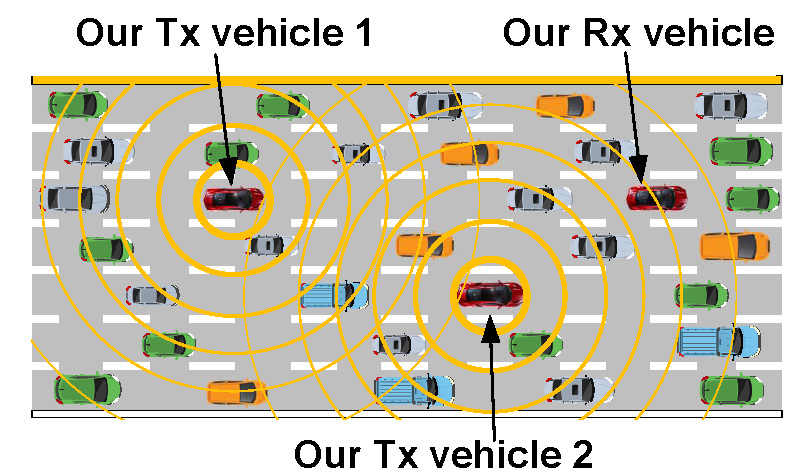A scalable ad hoc vehicular wireless communication system

While cellular networks and WLANs have been significantly advanced in the past decades and their services have penetrated every aspect of our lives, vehicular wireless communication networks remain in infancy and have not been ready for commercialization. This stagnation can be attributed to the following facts: huge number of vehicles, rapid change of network topology, and requirement of guaranteed latency.
There are two vehicular wireless communication solutions under consideration and investigation. One is based on 5G (or LTE). That is, each vehicle communicates with the cellular tower instead of its peer vehicles, even if its peer vehicles are in its proximity. Due to the large number of vehicles and their rapid movements, this solution suffers from several technical issues including poor scalability and large latency, which have not been resolved. In addition, this solution will entail a monthly service fee for each vehicle, leading to a financial burden to the vehicle owners.
The other solution is based on IEEE 802.11p standards, which is a variant of the popular Wi-Fi system. This solution uses CSMA as the medium access control (MAC), which is notoriously inefficient for a node to get channel access. As a result, this solution is not capable of guaranteeing the communication latency, making it incompetent for safety-related delay-sensitive applications.
The goal of this project is to develop a scalable ad hoc vehicular wireless communication system solution which can provide latency-restricted communication among the vehicles in a local area. Such a communication solution will adapt to the local environments and can be used for both vehicle-to-vehicle and vehicle-to-roadside communications.
Towards this goal, we have completed our preliminary design of vehicular wireless communication system using a software-defined radio (SDR) approach. We implemented a brand-new PHY (baseband signal processing) and MAC (channel access protocols) designs in a commodity laptop; and using USRP devices as the RF front-end. The system works in unlicensed spectrum band (2.4GHz and will be changed to 5GHz in the future).
